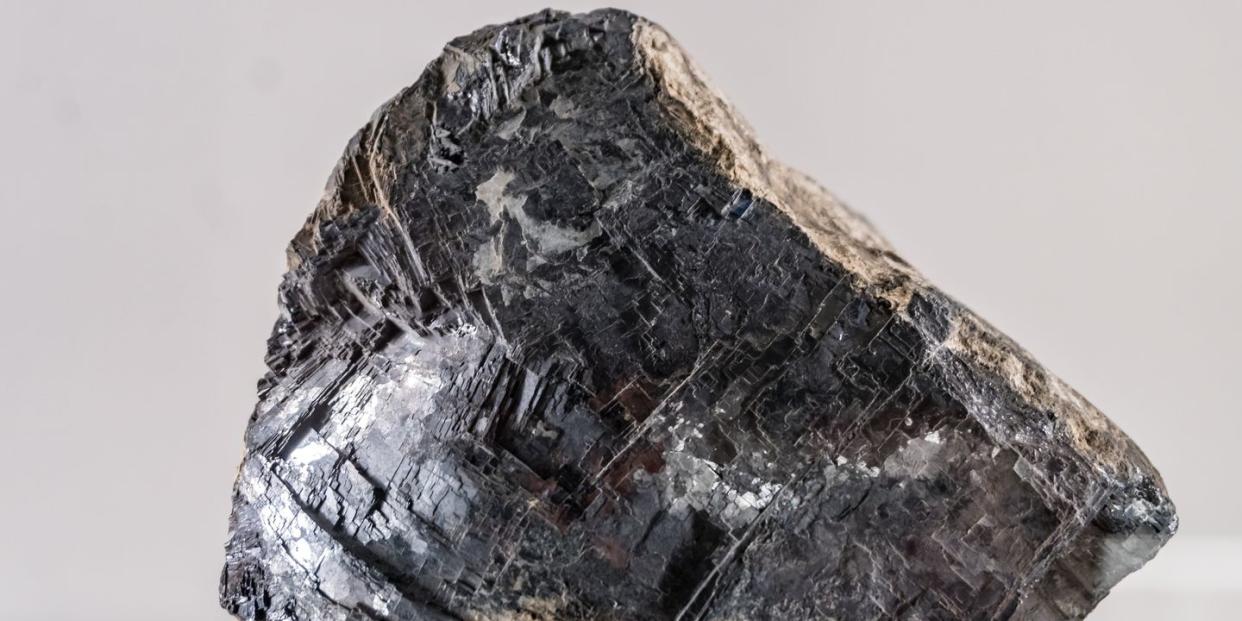Lead Is Stronger Than Steel If You Compress It Enough

Squeezing experts have put lead under pressure and found it grows 250 times stronger.
Potentially useful materials like liquid hydrogen are the result of extreme and pressurized environments in space.
Studying extremes in all materials can reveal hidden strengths and applications.
Science News reports that researchers at Lawrence Livermore National Laboratory have been putting lead under pressure, and the results are stronger than steel. Sorry, spider silk—this time it’s for real.
Lead is dense and super heavy, but it’s also easily malleable and soft. Under a barrage of many powerful lasers, the condensed lead grew 250 times stronger than before.
Pressure is a multi-layered subject in physics. So-called “condensed-matter physics” is the study of all solids, but some solids only exist in special conditions under pressure. Studying the pressurization of gases into, for example, liquid nitrogen or the condensed form of breathable gas used by scuba divers can help scientists imitate conditions in the center of the Earth or on planets with extremely strong gravity compared to Earth.
Studying how adding pressure affects existing solids is useful for the same reasons, plus the fact that we build using solids. Pressure and compression can distort or shatter brittle solids—we calculate pressure by considering the total force over a particular area, so everything from bridge-building to spaceflight to manufacturing both uses and must account for pressure.
Energy holy-grail metallic hydrogen is a liquid in high temperature and high-pressure conditions like those that exist in the sun. Arthur C. Clarke speculated that the core of Jupiter was a diamond the size of Earth, but real NASA scientists believe its mantle is a sea of liquid hydrogen under great pressure.
Scientists, then, are interested in pressurized environments and experiments for applications in extreme forms of construction or creation of superconductors and other cutting-edge uses. But this research is also a robust form of pure science. What happens to anything when we do crazy things to it?
Observations during research like this could lead to innovations in the future as scientists continue to develop composite materials and biomimicking nanomaterials. This kind of research can also help us enrich our understanding of the birth of celestial bodies, Earth’s roiling core, and planets like Jupiter that have crushing gravity—literally.
This isn’t Lawrence Livermore National Laboratory’s first rodeo, either. In 2010, they were “squeezing” diamonds to study how they perform. Like lead, diamonds also get even stronger under pressure. And earlier this year, the lab unveiled a house-designed dynamic diamond anvil cell (DDAC), where materials are literally placed between two diamond anvils that are smashed together. The DDAC joins Lawrence Livermore’s National Ignition Facility, “the world’s largest and most energetic laser,” which performed the lead compression.
The Lawrence Livermore team says it will turn to lead alloys next. The most abundant naturally occurring form of lead is in galena, a lustrous metallic mineral made of lead and silver. In the 1820s, lead was essential to manufactured goods, and miners discovered so much galena in the northwestern tip of Illinois that they named the town of Galena after it, along with dozens of other Galenas around the country.
Lead has a bad reputation because of its role in the poisoning of groundwater and, for a long time, the paint used in homes and on consumer goods. In refined forms used in extreme conditions and not by humans or their drinking water, compressed lead may still have potential.
You Might Also Like

